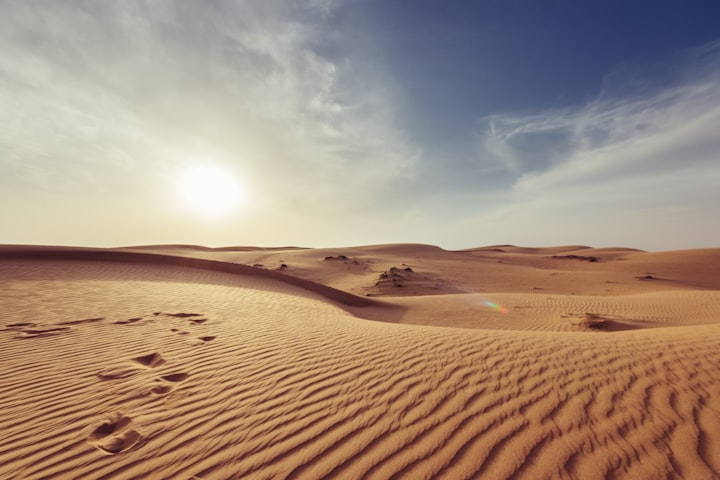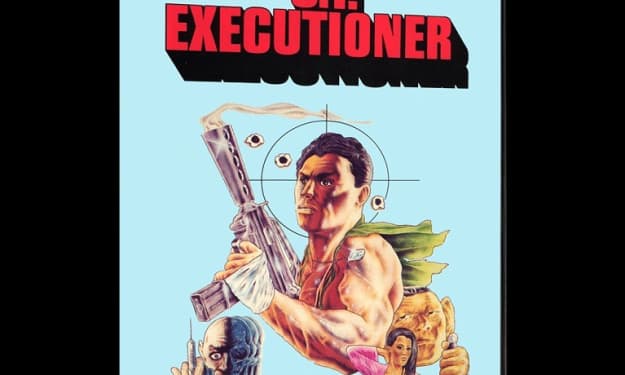Kairouan
Part I for the multi-part story "The Desert's Edge"

It was cold, but a glorious morning when I left by motor for Kairouan. Soon the white houses of Tunis were left behind. The sun was rising as we flung its outskirts behind us, and the car headed for open country. Rocky hills showed themselves on the horizon, and there were abrupt peaks rising out of stretches of carefully cultivated vineyards, orchards of olive trees, and broad fields just tinged with the promise of early wheat. No walls, but occasional cactus hedges. The road climbed a saddle of hill from whence one could look back on the sea. A few houses here and there, flat-roofed and built in the Moorish style, were obviously the homes of the landowners. Not an inch of ground seemed wasted. Arabs were already at work behind their wooden ploughs, drawn either by horses, mules, bullocks, or camels. These last looked as if they were inwardly protesting against the indignity, and stalked along with their usual disdainful air. After a time the road led into wilder country, bare stretches covered only with a sort of rough heathery plant, with scattered encampments of Bedouins, their black tents surrounded by a zareba of piled thorns. At last we caught the gleam of the white domes of Kairouan against the sky.
It lies in an open plain, and one’s first impression is of its whiteness. White-washed mosques and tombs, white flat-topped houses, enclosed in a high brown crenellated wall. Once inside the gates, all touch of European atmosphere is left behind. The city is Eastern to the core, “une vraie ville arabe,” as Hassan said. It is one of the sacred Moslem places and is a great centre for pilgrimages. The chief mosque is Sidi-Okba, with its large courtyard and numerous doorways leading into the interior, where in the gloom one sees the roof supported by row after row of Roman pillars. The effect in the vast emptiness is striking. The existing structure is said to date from the ninth century, and the builders must have ransacked ancient ruins for their materials. Some of the columns are of red porphyry, and the antique minbar or pulpit-chair is beautifully carved in wood, but beyond this the decorations are poor.
From the minaret in the courtyard there is a lovely view, the holy city crouched below with the frequent bubbles of its domed tombs and mosques, and beyond the wall, wide spaces stretching to distant hills.
But the crowded streets and souks, or covered arcades, were the chief attraction of Kairouan. Nearly all the men wore a burnous with a hood that came over the head. The women did not wear the ugly face covering seen in Tunis, but they were so closely wrapped in voluminous black or white draperies that they looked like walking bundles. Occasionally an eye peered out from amongst the folds, but one wondered how they could see to make their way. Bedouin women strode past, good-looking and haughty, their head-covering thrown back showing their tattooed faces, their necks covered with coins; whilst the blue of their robes made a pleasant note of colour. Their men were tall and sinewy with hawk features, and they wore their sand-coloured burnous like dispossessed princes. Here and there one saw the vivid green cloak or turban of some holy man who had done the journey to Mecca, or there was a splash of madder or burnt orange; but for the most part the crowd was neutral-tinted. Everything, buildings, streets, mosques, and crowds, was drenched in a glow of sunlight. Even the shadows seemed warm and throbbing. The market-place was the great centre, and here it was almost difficult to push through the throng. Men in grave and dignified draperies sat outside the cafés, drinking from tiny handleless cups and smoking meditatively.
I said the place was untouched by modernism, but I must confess that they were usually listening with grave pleasure to a gramophone reproduction of the voices of their own singers! It was fortunate when it kept to that. I was sketching one morning near a café, and through my absorption I became aware of the gramophone giving piercing shrieks and discoursing in a high-pitched woman’s voice. It began to worry me. “What on earth is that record, Hassan?” I asked impatiently, and was appalled at the ready response that it was a Jewess adding to the numbers of Israel! Needless to say, Hassan did not use such a roundabout way of expressing himself. I cast a swift glance at the Arab audience. Impassively they sat, sipping their coffee, and it was impossible to tell what they were thinking of. But Hassan assured me it was a favourite record and most amusing; I hastily became very busy with my painting.
Ali Hassan was my guide in Kairouan and showed an intelligent interest in points of view to sketch. He was a portly Arab, disinclined to exert himself, so the job just suited him. And he spoke French well. He told me he had been born in Kairouan but that he was a travelled man. Had he not been to Tunis, to Algiers, and even to Marseilles? He claimed kinship with nearly every person in Kairouan and this proved a great asset. When I expressed a wish to see the women’s Turkish Baths, “That is easily done,” said he, “for is not the Keeper of the Baths my mother-in-law?” As we passed the outer door he thrust his head in and called to her to come forth. I pushed open a second door, and an old wrinkled crone appeared in a cloud of steam and led me through the various rooms. None of the bathers seemed the least embarrassed at my sudden appearance, but greeted me with smiles as I picked my way through the puddles of water and the pale olive of nude limbs. There were family parties of mothers and daughters and even tiny babies of a few months old, all chattering happily together and plastering themselves with a kind of grey clay. The outer room, where all the clothes were left, was in charge of a girl of fifteen or so, and here were numerous clients in various stages of cooling-off. Arab women in the towns go to the baths two or three times a week, so it is pleasant to feel that the people under the black shrouds that one meets in the streets, are at least clean.
On cold days when Hassan sat huddled in his white burnous by my campstool, looking like an elderly and discontented Father Christmas, it was usually not long before one of his invaluable relatives appeared bringing him a cup of coffee. “The waiter at the Snake Charmer’s café is my sister’s son,” remarked Hassan, complacently sipping, whilst I mused on the vista of relationships opened up by a plurality of wives. I had already met two uncles, two mothers-in-law, five or six of his children, a wife and a nephew. How many more were there? Soon I wanted a small boy to pose in the foreground of my picture. “I will fetch one of my sons,” remarked the conjuror, and walked across the street, returning with a most unwilling small child. “And it is not necessary to give him anything. The sight of money makes the eye greedy,” said his father, peacefully relapsing into the folds of his cloak whilst I settled to work.





Comments
There are no comments for this story
Be the first to respond and start the conversation.